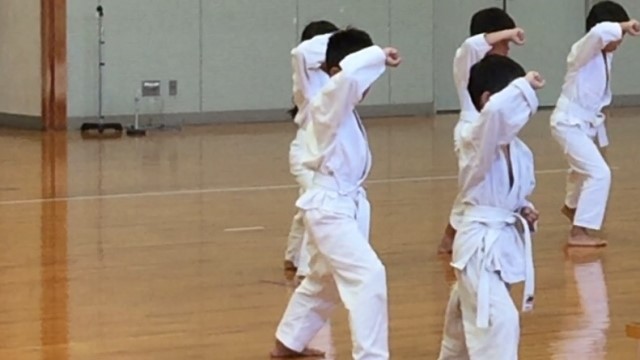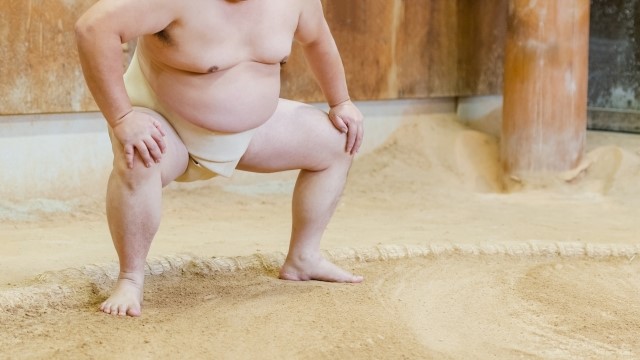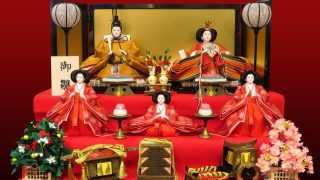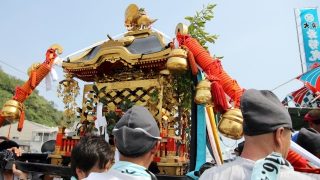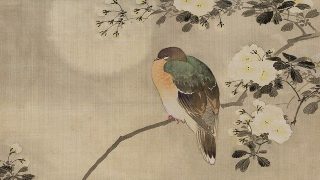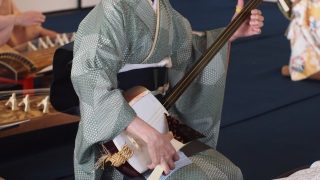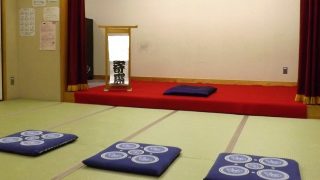About Judo (柔道)
Judo is not just a martial art but a sport that emphasizes the training of a spirit that begins and ends with bowing (礼-courtesy).
Currently, it is popular in Japan, the birthplace of Judo, and other countries around the world for both men and women, and it has been adopted as an official Olympic sport.
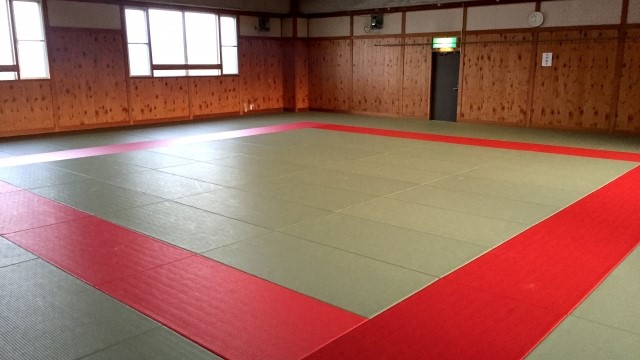
The beginning of Judo
“Ju-Jutsu” was born out of the systematization of the technique of “Kumiuchi,” which is a one-on-one battle on the battlefield. As a martial art of winning by using the power of the opponent without weapons, it became widely popular during the Edo period, and various styles of martial arts were born.
It was Jigoro Kano who evolved Ju-Jutsu into “Judo.” As a young boy, Kano was frail, and in order to become stronger, he studied several styles of martial arts and mastered the essence of martial arts. Then, in 1882, he opened the Kodokan and created “Judo.” He said that the purpose of Judo is to discipline the body and make it strong, to cultivate the spirit, to form the character, and to contribute to society.
He was also very active in promoting it abroad. Judo is a martial art that is now popular all over the world. There is an increasing number of cases in which the rules of the game are different from those in Japan, for example, the use of colored Judo jackets.
The enchantment of Judo
When we think of Judo, we think of throwing an opponent in a Judo hall. Indeed, it is also Judo, but originally, Judo is said to be the way to make the most effective use of the power of mind and body.
In other words, what is important in Judo is learning Judo techniques and using the body and mind effectively in daily life. It is also said that by mastering the technique of Judo, even a small person with a small body can control a person who is superior in physique and strength (柔能く剛を制す- The small person may beat the strong.).
It is also said that by practicing Judo, it is important to respect your opponent, cooperate, and help each other so that both you and your opponent can improve together. Jigoro Kano, the founder of Judo and the father of Judo, expressed these ideas in the words “精力善用-Maximum efficient use of energy” and “自他共栄-Principle of mutual welfare and benefit ” to describe the enchantment of Judo.
精力善用-Maximum efficient use of energy-Seiryoku Zenyo
You are putting your opponent and your energy to work effectively.
In Judo, you don’t only learn to “control” but also to use your opponent’s power and your own power effectively. Rather than trying to work your way up while controlling or hurting other forces, you aim to work with other forces to achieve your goals efficiently.
自他共栄-Principle of mutual welfare and benefit-Jita Kyoei
If we can trust and help each other, we and the people in the world can prosper together. We hope that by fostering a spirit of cooperation and prosperity with others through Judo practice, more and more excellent athletes will come into the world.
柔能く剛を制す- The small person may beat the strong-Juyoku Gowo Seisu
It is a word used to describe the essence of judo. It comes from the saying that the softest conquers the hardest, and the weakest conquers the strongest.
A small person can throw a large person away if he or she takes advantage of his or her opponent’s movement, loses his or her opponent’s balance, and makes a well-timed move.
How to decide a judo win or loss
There are three main patterns of Judo wins and losses.
Ippon(一本)
The most significant point is “Ippon”. The match is over. There are two types of Ippon, “throwing(投げ-Nage)” and “suppressing(抑え込み-Osaekomi).”
Throwing(Nage) requires that the four elements of (1) control over the opponent, (2) putting the opponent’s back on the tatami, (3) strength, and (4) speed be met.
Suppressing (Osaekomi) is to hold the opponent’s back and shoulders on the tatami when you bring it into a Newaza. In the case of “Osaekomi,” it will be “Ippon” in 20 seconds.
Waza-ari(技あり)
“Waza-ari” satisfies two or more of the four elements of Ippon: (1) control over the opponent, (2) putting the opponent’s back on the tatami, (3) strength, and (4) speed.
Waza-ari is just a point, so no matter how many times you get Waza-ari, the match will never end. At the end of the match, the fighter with the most Waza-ari wins.
Shi-do (指導)
You will be given “Shi-do” if you deliberately fail to combine with the other person or take a reluctant stance. Other things subject to “Shi-do” include not attacking but combining in ways other than the standard way and deliberately pushing the opponent out of the field. If you receive “Shi-do” three times, you are a foul loser.
Abolition of Yu-ko(有効)
In the past, there were three stages point in Judo: Ippon, Waza-ari, and Yu-ko. That was the rule revision, and starting in 2018, Yu-ko was abolished, with only Ippon and Waza-ari.
Various technique of judo
There are two major types of Judo techniques:
Throwing (Nage-waza) and Solidifying (Katame-waza).
Nage-waza
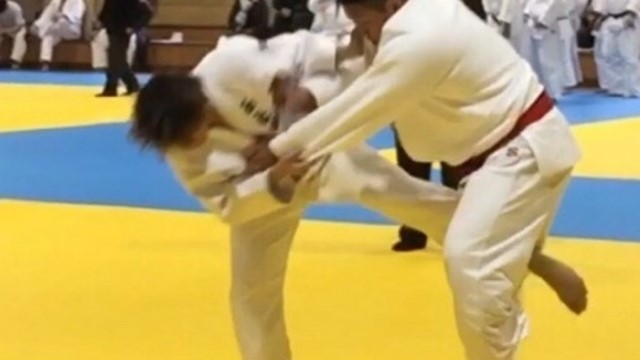
Osoto-gari
It is one of the foot techniques. It is a technique to knock down the opponent’s right knee with your right knee from the outside with the back part of your right knee.
Ippon-Zeoi
It is one of the hand techniques. This is a variation of the back throw, in which you grab one arm of the opponent and throw the opponent from the position where you are carrying the opponent.
Katame-waza
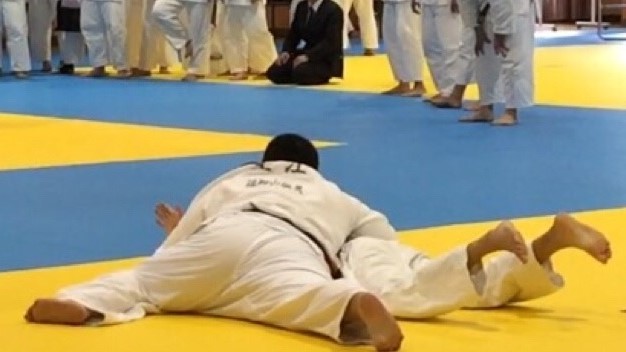
Kesa-gatame
It’s one of Osaekomi’s techniques. It is a technique to put the right arm behind the opponent’s neck and hold the opponent’s right arm between the left side.
The relationship between the color of the band (obi) and its grade.
The black band, the mark of a Yudansha(#), was born in Kodokan around 1887. Later, a grading system was created, and the band’s colors increased.
Previously, female Yudansha were black bands with white lines, but starting in 2017, men and women are now the same black band.
(#)Yudansha is a person with the grade ‘dan’ in judo.
There are also dan levels higher than a black band, but the minimum age at which dan can be obtained is set at an older age, making it difficult to obtain one in an active playing career.
The under-20 division has a different relationship between color and grade.
Color and grade
| Red | 9 ~ 10 dan |
|---|---|
| Red and white | 6 ~ 8 dan |
| Black | 1 ~ 5 dan |
| Brown | 1 ~ 3 kyu |
| White | 4 ~ 5 kyu, beginner |




